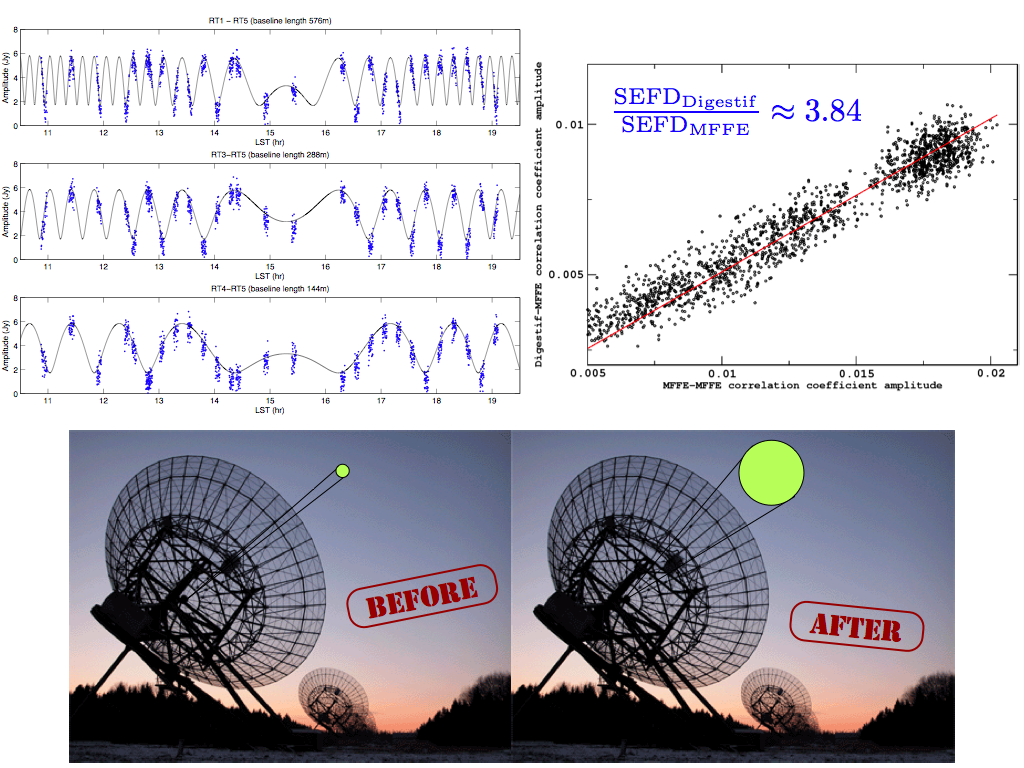Daily Image
30-03-2009The SEFD of Digestif
| Submitter: | George Heald for the Apertif team |
| Description: | One of the most important figures of merit for any radio telescope is the System Equivalent Flux Density, or SEFD. This number encapsulates the sensitivity of the telescope. It tells us how bright a radio source would have to be in order to produce as much power as the noise level of the telescope. A lower number is better - if the signal from a fainter source can match the noise level, then the telescope is more sensitive. It is important to determine the SEFD of the Digestif Focal Plane Array (FPA) demonstrator. We can take advantage of the fact the Digestif system is embedded in the well-understood WSRT (with its Multi-Frequency Front Ends or MFFEs) to indirectly measure the SEFD. In an interferometer, the strength of the correlation signal on a given baseline is directly related to the SEFDs of the two telescopes making up that baseline. In previous experiments, we have observed using MFFE-MFFE baselines and Digestif-MFFE baselines simultaneously (with redundant spacings thanks to the layout of WSRT). We can therefore directly compare the correlation amplitudes and extract the SEFD of Digestif relative to the MFFE-equipped WSRT antennas. The top left-hand panel of today's image shows the correlated signal on three different Digestif-MFFE baselines, as a function of time, while tracking the 3C343 field shown in recent AJDIs. The blue dots are the measured data, and the black line shows the prediction based on a model of the field. In the top right panel, we show the comparison between the uncalibrated samples on an MFFE-Digestif baseline, and on a redundant MFFE-MFFE baseline. The Digestif FPA elements were combined to form a compound beam for these measurements. The slope of the linear relation allows us to directly determine that the SEFD of Digestif -- an unoptimized demonstrator -- is only 3.84 times higher than that of the WSRT (with its cryogenically cooled receivers!). The LNAs and Vivaldi design can be significantly improved to yield a much lower system temperature (and thus a much improved SEFD). In fact such an upgrade to Digestif will occur later this year. Farther in the future, the full Apertif system will provide further sensitivity improvements, so that the final SEFD will be considerably lower than the one measured here. And, since the field of view will be increased by a factor of about 25, the survey speed will be far higher than that of the current WSRT. |
| Copyright: | ASTRON |
| Tweet |  |
